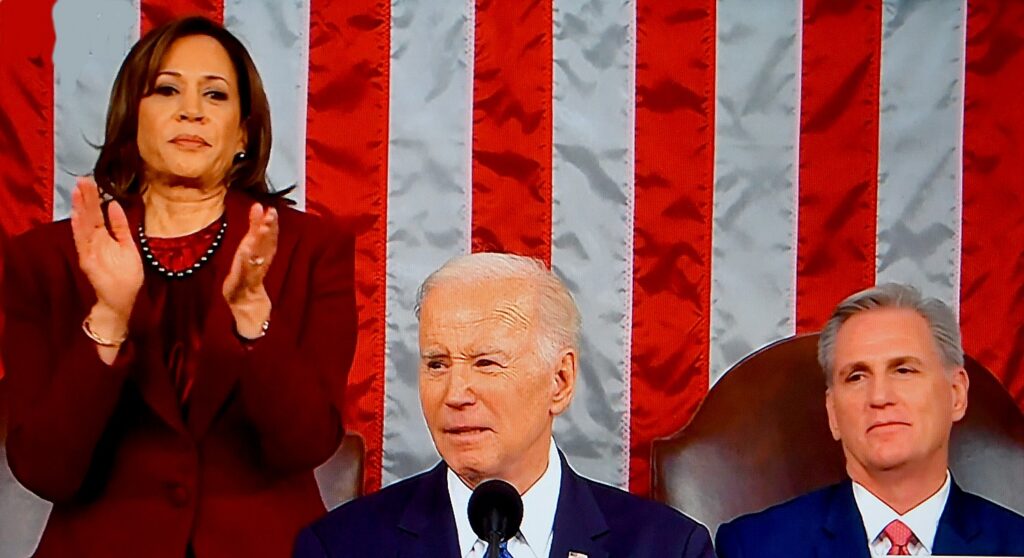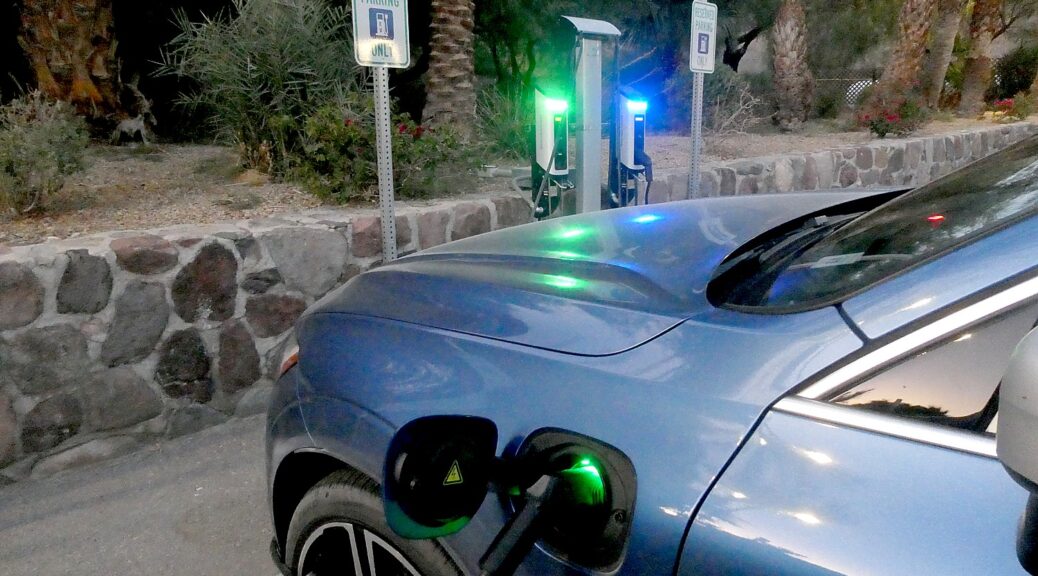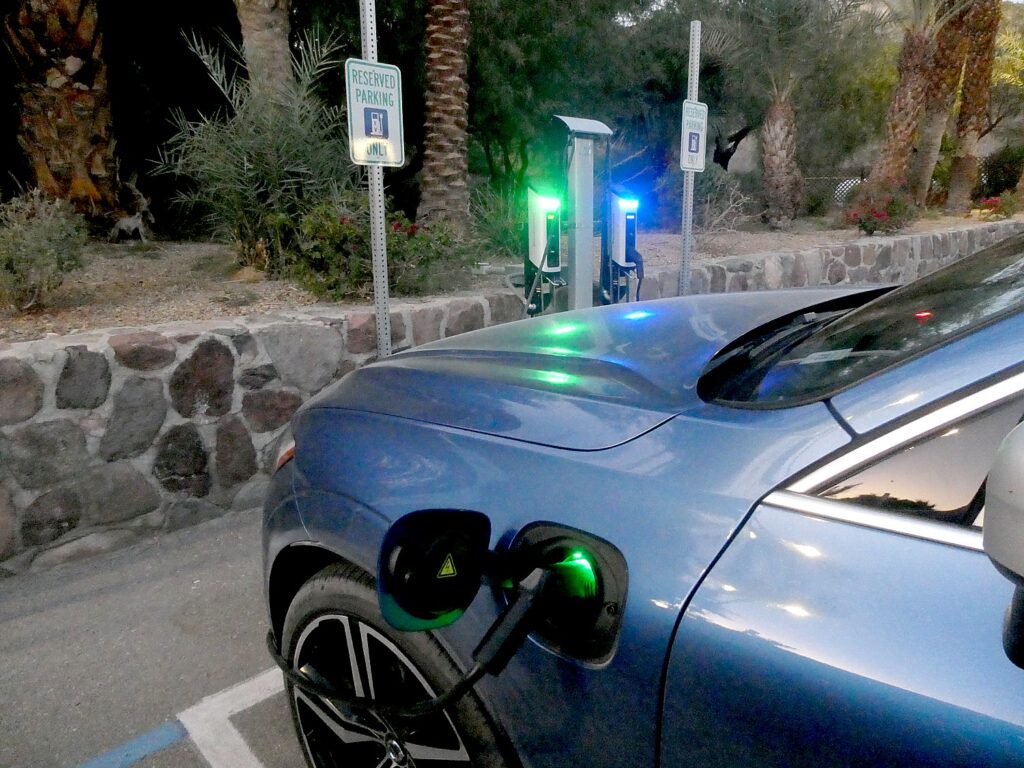The White House provided this fact sheet on the ways the Biden-Harris Administration has worked to lower costs – and counter the impacts of inflation – for families, while highlighting the contrast with Republican policies, which if given power, would reverse, repeal the progress.
The Trump/MAGA campaign delights in attacking Vice President Kamala Harris for anything they charge went wrong in the last four years (falsely attacking her as the Border Czar and deflecting blame for sabotaging passage of the Bipartisan Border Security bill), especially inflating levels of inflation and lying about economic growth. But if she is blamed for what they say went wrong, shouldn’t the Vice President also take credit for what the administration is doing so well to improve lives for ordinary Americans and counter the impacts of inflation, price-gouging and profit-taking by corporations? Indeed, as Vice President, she has the blueprint to continue such policies in her administration and not be stuck starting from scratch.—Karen Rubin/news-photos-features.com
“My plan is to lower everyday costs for hardworking families and lower the deficit by asking large corporations and the wealthiest Americans to not engage in price gouging and to pay their fair share in taxes.” — President Biden

President Biden and Vice President Harris know that prices are too high and too many families are being squeezed by the cost of living. Their actions are lowering costs in key areas—from health insurance premiums and prescription drug prices to utility bills, groceries, and gas. And their Administration is fighting to further lower costs by taking on price gouging by big corporations making record profits and special interests like Big Pharma that are charging prices two or three times higher than in other countries—while successfully calling on grocery chains to lower grocery prices.
There is more to do. The President and Vice President will keep fighting for hardworking families with an agenda to lower housing and child care costs, and give tax relief to working Americans and middle-class families while making the wealthy and big corporations pay their fair share.
While Congressional Republicans side with special interests and billionaires to keep prices and profits high, the Biden-Harris Administration will continue to take action to lower costs for the American people.
President Biden and Vice President Harris’s lowering costs agenda, and Congressional Republicans’ plan to raise costs:
Lowering Health Care Costs
President Biden and Vice President Harris are fighting for families who are struggling with health care costs and pharmaceutical prices that are two to three times higher than in other countries. They are taking historic action to lower costs—taking on Big Pharma to allow Medicare to negotiate lower prescription drug prices, capping the cost of insulin and prescription drugs for seniors, and building on the Affordable Care Act to lower health insurance premiums by about $800 per year for millions of Americans. Their plan will extend and expand those actions to cap costs for all Americans. Congressional Republicans voted against these actions to lower health care costs—their plan would increase prices for millions of families and cut Medicare, Medicaid, and the Affordable Care Act.
Biden-Harris Administration Actions:
- Lowering health insurance premiums by an average of about $800 per year for millions of Americans by expanding the Affordable Care Act’s premium tax credits—helping an additional 900,000 Hispanic Americans, 430,000 Black Americans, and 100,000 Asian Americans get health insurance.
- Sign up for health insurance at HealthCare.gov.
- Capping prescription drug costs at $2,000 per year for 54 million seniors, people with disabilities, and other Medicare beneficiaries starting in 2025, saving 19 million households an average of $400 per year.
- If you have Medicare, learn how you are saving at LowerDrugCosts.gov.
- Giving Medicare the power to negotiate lower prescription drug prices, which could lower costs for drugs used by up to 9 million seniors and people with disabilities in 2026 alone.
- Lowering prescription drug prices by requiring companies to pay rebates if they raise prices faster than the rate of inflation—which is already saving up to 750,000 Medicare beneficiaries between $1 and $3,575 per day.
- Capping insulin costs at $35 per month for Medicare beneficiaries, saving 1.5 million seniors and people with disabilities as much as $365 per month—and getting the three largest insulin producers to cap insulin prices for other Americans.
- Lowering inhaler costs to $35 from three of the largest inhaler producers by calling out excessive prices and challenging improperly listed patents, saving eligible consumers around $1,200 per year.
- Lowering hearing aid prices by as much as $3,000 per pair by making hearing aids available over the counter.
- Providing free vaccines for Medicare beneficiaries, including the shingles vaccine—saving seniors and people with disabilities an average of $70 per year.
- Reducing medical debt by preventing as many as 1 million surprise medical bills averaging $750 to $2,600 every month and cracking down on junk health insurance.
- Forgiving medical debt for nearly 3 million Americans by 2026 via states and local governments using American Rescue Plan funds.
The Biden-Harris Administration Plan:
- Lower health insurance premiums by about $800 per year permanently for millions of Americans by extending the expanded Affordable Care Act tax credits.
- Lower prices for more prescription drugs by letting Medicare negotiate prices for more drugs.
- Cap insulin costs at $35 per month for all Americans, which would save nearly $1,000 per year for the millions of Americans not on Medicare that use insulin.
- Cap prescription drug costs at $2,000 per year for all Americans.
- Address price gouging by Big Pharma by proposing a new march-in framework, which would help ensure that taxpayer-funded drugs are reasonably accessible to the public, including at a reasonable price.
- Reduce the burden of medical debt by proposing that it be excluded from credit reports, which would raise credit scores for 15 million Americans by an average of 20 points and lead to the approval of approximately 22,000 additional mortgages every year.
The Republican Plan to Increase Costs:
- Congressional Republicans sided with Big Pharma to vote against lowering prescription drug prices; want to repeal the Affordable Care Act, which would threaten health care for millions of Americans with pre-existing conditions; increase costs for health insurance, insulin, and prescription drugs; and slash Medicare and Medicaid.
Lowering Utility Bills
President Biden and Vice President Harris know the burden that rising utility bills place on families. They are taking action to lower energy costs with affordable clean energy and energy efficient appliances, and to lower cable and satellite TV bills by banning hidden junk fees. Congressional Republicans voted with Big Oil to keep utility bills and gas prices high.
Biden-Harris Administration Actions:
- Lowering utility bills an average of $500 per year by lowering the cost of energy-saving home improvements through up front tax credits of up to $3,200 and direct consumer rebates of up to $14,000 for heat pumps, doors, windows, and insulation.
- Learn how you can save on home upgrades and utility bills at EnergyStar.gov/HomeSavings.
- Lowering utility bills by nearly $400 per year by increasing access to solar energy through tax credits of up to 30% of the cost of rooftop solar and battery storage and expanded access to residential community solar.
- Learn how you can save on solar energy at Energy.gov/Save.
- Lowering heating and cooling costs through recordincreases in the Low Income Home Energy Assistance Program (LIHEAP).
- Learn if you qualify for LIHEAP at EnergyHelp.us.
- Saving households $170-220 per year on their electricity bills and other goods and services over the next decade by investing in affordable clean energy.
- Lowering cable and satellite TV bills by requiring providers to give consumers the all-in price up front.
- Lowered internet bills by $30–75 per month for over 23 million households, saving them more than $360 a year.
The Biden-Harris Administration Plan:
- Ban early termination fees for TV, phone, and internet service, which can cost more than $200.
The Republican Plan to Increase Costs:
- Congressional Republicans have sided with special interests to keep utility bills high, blocked actions to lower internet bills, and tried to repeal programs that are lowering electricity bills.
Lowering Gas Prices and Travel Costs
President Biden and Vice President Harris know prices at the pump and travel costs are too high. They are taking action to lower gas prices now through record energy production and strategic releases of oil and gasoline, and to lower gas prices for the long term and expand access to affordable clean vehicles. They’re also taking on airlines’ hidden junk fees that increase the cost of flights. Congressional Republicans voted against these actions and with special interests to keep gas prices and travel costs high.
Biden-Harris Administration Actions:
- Lowering gas prices this summer with the sale of 1 million barrels of gasoline from the Northeast Gasoline Supply Reserve ahead of the Fourth of July.
- Lowering gas prices by up to 25 cents per gallon in certain markets, particularly in the Midwest, by making E15 gasoline available in the summer.
- Lowered gas prices in 2022 by as much as 40 cents per gallon with historic, coordinated releases from the Strategic Petroleum Reserve—saving a household with two cars as much as $250 on gas after Putin’s war against Ukraine caused prices to spike.
- Lowering fuel costs by an average of $700 a year and maintenance costs by $500 a year by lowering the cost of clean vehicles through tax credits available at purchase of up to $7,500 for new clean vehicles and up to $4,000 for used clean vehicles, as well as up to $1,000 for charger installation.
- Learn how you can save on fuel costs and clean vehicles at Energy.gov/Save.
- Cracking down on anticompetitive practices by oil executives that can raise prices at the pump.
- Banning surprise airline junk fees by requiring upfront disclosure of baggage, change, and cancellation fees, saving Americans over half a billion dollars a year.
- Requiring airlines provide automatic cash refunds for canceled or significantly changed flights, delayed baggage, and when services like WiFi are unavailable.
- Securing commitments from airlines to guarantee hotels and meals when they are at fault for flight delays or cancellations.
- Learn whether your airline offers these benefits at FlightRights.gov.
The Biden-Harris Administration Plan:
- Ban family seating fees to guarantee that parents can sit with their children for no extra charge when they fly, saving a family of four about $200 per roundtrip flight—building on commitments the Administration secured from four major airlines.
- Learn whether your airline guarantees family seating at FlightRights.gov.
- Require airlines cover expenses such as meals, hotels, and rebooking and provide additional compensation when they are responsible for delays or cancellations.
- Partner with 18 state attorneys general to enforce against unfair airline practices that can raise ticket prices or shortchange passengers.
The Republican Plan to Increase Costs:
- Congressional Republicans sided with Big Oil to vote against lowering gas prices and with special interests to try to keep travel costs high.
Lowering Housing Costs
President Biden and Vice President Harris know housing costs are too high, and they are fighting to lower them. Their Administration is cutting mortgage insurance premiums and expanding rental assistance, and they are calling on Congress to help build more homes and lower costs for homebuyers and renters. Their plan will give more Americans a chance at the American Dream. Congressional Republicans voted to raise housing prices by cutting programs that increase affordable housing and provide assistance to renters.
Biden-Harris Administration Actions:
- Cutting mortgage insurance premiums by about $900 per year for nearly 700,000 homebuyers and homeowners.
- Providing rental assistance to more than 5 million households, including an additional 100,000 low-income families.
- Capping rent increases in roughly 2 million apartments financed by the Low-Income Housing Tax Credit (LIHTC), saving nearly 1 million households hundreds of dollars in rent in 2024.
- Cracking down on rental junk fees, including repeated application fees, “convenience fees” to pay rent online, and fees for mail sorting and trash collection.
- Cracking down on price-fixing by landlords that can raise rents for tens of millions of apartments.
- Provided rental assistance to 8 million renters to help pay rent, keep them in their homes, and cover utilities bills during the pandemic.
- Provided homeowner assistance to over 500,000 homeowners for mortgage payments, utility expenses, and property taxes during the pandemic.
The Biden-Harris Administration Plan:
- Provide mortgage payment relief of up to $10,000 for first-time homebuyers and middle-class families selling their starter home.
- Lower down payments by up to $25,000 for first-generation homebuyers.
- Build 2 million new homes, including 1.3 million affordable rental units and over 400,000 starter homes to lower the cost of rent and buying a home.
- Expand rental assistance to more than half a million households.
- Lower refinancing closing costs by an average of $750 for thousands of homeowners by not requiring title insurance.
The Republican Plan to Increase Costs:
- Congressional Republicans want to raise housing costs, including repealing investments to increase affordable housing and keep homeowners and renters in their homes, and have repeatedly proposed increasing housing costs by cutting funding for rental assistance, to build more homes, and to lower mortgage costs. Senate Republicans oppose a bill that passed the House with overwhelming bipartisan support that would help build 200,000 affordable homes.
Lowering Grocery Costs
President Biden and Vice President Harris know grocery prices are too high. They called on grocery chains making record profits to lower their prices, and appreciate that some have answered the call. Their Administration is taking action to lower grocery costs—increasing food assistance for low-income families; strengthening supply chains to lower food prices; and cracking down on price gouging and promoting competition in the agriculture industry. Congressional Republicans want to put a large tax on food imports and have voted to increase grocery costs by cutting food assistance for low-income families, new moms, and seniors.
Biden-Harris Administration Actions:
- Providing the typical low-income family of four about $2,000 more for groceries each year by improving SNAP—lifting about 3 million people out of poverty, including 400,000 Black children, 350,000 Hispanic children, and 18,000 Asian American children—and launching Summer EBT for nearly 21 million children.
- Learn if you qualify at FNS.USDA.gov/SNAP and FNS.USDA.gov/Summer.
- Calling on grocery chains making record profits to lower grocery prices—with several grocery chains answering the President’s call and lowering prices.
- Investing in fertilizer production and meat and poultry processors to lower costs by spurring competition and giving farmers more market options.
- Fixing supply chains that were broken by the pandemic, and strengthening them for the long-term—including food supply chains—to lower food costs.
The Biden-Harris Administration Plan:
- Partner with 31 state attorneys general to crack down on price gouging and other anticompetitive practices that increase food costs.
- Call out shrinkflation—a rip-off that gives families less bang for their buck by reducing the size of a product while maintaining or increasing the price.
- Promote competition in the agriculture industry to help small farmers compete and lower costs at the grocery store.
- If you’re a farmer, submit complaints about antitrust violations at FarmerFairness.gov.
The Republican Plan to Increase Costs:
- Congressional Republicans have voted to keep grocery costs high by cutting food assistance for low-income families, new parents, and babies; slashing Meals on Wheels for seniors; and siding with Big Ag to try to block actions to increase competition in agriculture. Congressional Republicans are also calling for huge taxes on food imports, including a 10% across-the-board tax on all imports that would raise costs for families by an average of $1,500 per year.
Lowering Child Care and Education Costs
President Biden and Vice President Harris know child care and education is unaffordable for many families. They are fighting to lower these costs by capping child care costs for low-income families, expanding access to workforce training, and delivering on student debt relief. Their plan lowers child care costs to no more than $10 a day for most Americans, expands free universal preschool, and lowers the cost of college. Congressional Republicans have voted to raise child care and education costs by cutting Head Start and Pre-K programs, cutting Pell Grants, and blocking student debt relief.
Biden-Harris Administration Actions:
- Lowering child care costs for more than 100,000 lower-income families by capping costs at no more than 7% of their income, saving an average of $2,400 a year.
- Learn if you are eligible for child care assistance at Benefits.gov.
- Saved families $1,250 per child on child care by helping more than 225,000 child care providers that serve as many as 10 million children stay open during the pandemic.
- Lowering college costs by increasing the maximum Pell Grant by $900 per year—the largest increase in more than a decade.
- Apply for Pell Grants and other student aid at StudentAid.gov/FAFSA.
- Canceling student debt for more than 4.75 million Americans through various actions.
- Learn if you qualify for student loan forgiveness at StudentAid.gov/Forgiveness.
- Reducing student loan payments through the SAVE plan, with 8 million borrowers enrolled, of which 4.6 million have a $0 monthly payment and others are saving an average of more than $1,000 a year.
- Learn how you may be able to lower student loan payments at StudentAid.gov/SAVE.
- Saved 40 million working families with children an average of $2,600 per year by expanding the Child Tax Credit in 2021—which cut child poverty nearly in half, lifting 1.2 million Hispanic children, 800,000 Black children, and 100,000 Asian American children out of poverty.
- Learn more at ChildTaxCredit.gov.
- Provided nearly 20 million college students with tuition relief during the pandemic.
The Biden-Harris Administration Plan:
- Save families with children an average of $2,600 per year by restoring the expanded Child Tax Credit to help families afford everyday costs and lift 3 million children out of poverty.
- Lower child care costs with a new program to guarantee affordable, high-quality child care for 16 million children in families making up to $200,000 per year, with most families paying no more than $10 a day and the average family saving $7,200 a year.
- Save families of 4 million children $13,000 a year with free, universal preschool and Head Start for all four-year-olds and a path to expand preschool to three-year-olds.
- Lower college costs by remaining on a path to double the maximum Pell Grant to $13,000 per year by 2029—with an increase of $750 next school year alone.
- Lower the cost of college tuition by up to $20,000 by increasing access to dual enrollment for high school students.
- Expand free community college—saving eligible students $4,500 or more per year.
- Expand student debt relief to over 30 million Americans, including those with runaway interest, who are eligible for forgiveness but not enrolled, who entered repayment over 20 years ago, or who attended programs that failed to provide sufficient value.
- Learn if you would qualify for student debt relief at StudentAid.gov/DebtRelief.
The Republican Plan to Increase Costs:
- Congressional Republicans want to increase the cost of child care and education by eliminating 250,000 Head Start and 260,000 child care slots, eliminating Pell Grants for 80,000 students, and increasing student loan payments.
Lowering Credit Card, Banking, and Other Financial Costs
President Biden and Vice President Harris are fighting Big Banks to lower the costs of using credit cards, bank services, and other financial costs. They are cutting credit card late fees from $32 to $8, overdraft fees from $35 to as low as $3, and taking on other hidden junk fees to save Americans $20 billion per year. Congressional Republicans have sided with Big Banks on Wall Street and Park Avenue to try to protect these junk fees that burden hardworking families.
Biden-Harris Administration Actions:
- Cutting credit card late fees from $32 to $8, saving the 45 million Americans that pay these fees an average of $220 per year.
- Protecting retirement security by cracking down on junk fees in retirement investment advice, increasing retirement savings by tens or even hundreds of thousands of dollars.
- Saving taxpayers an average of $150 peryear with Direct File—a new, free tax filing option that has already saved filers millions of dollars in its Pilot Program and is now being expanded across the country.
- Learn how you can save on tax filing at DirectFile.IRS.gov.
The Biden-Harris Administration Plan:
- Cut overdraft fees from $35 to as low as $3, saving the 23 million households that pay these fees an average of $150 per year.
- Ban hidden junk fees that can increase prices by up to 20% and require companies to show the full price up front.
The Republican Plan to Increase Costs:Congressional Republicans sided with Big Banks and other special interests to try to block actions to ban junk fees—including voting to keep credit card late fees high—and Republican officials have joined big corporations to try to overturn these consumer protections in court.














